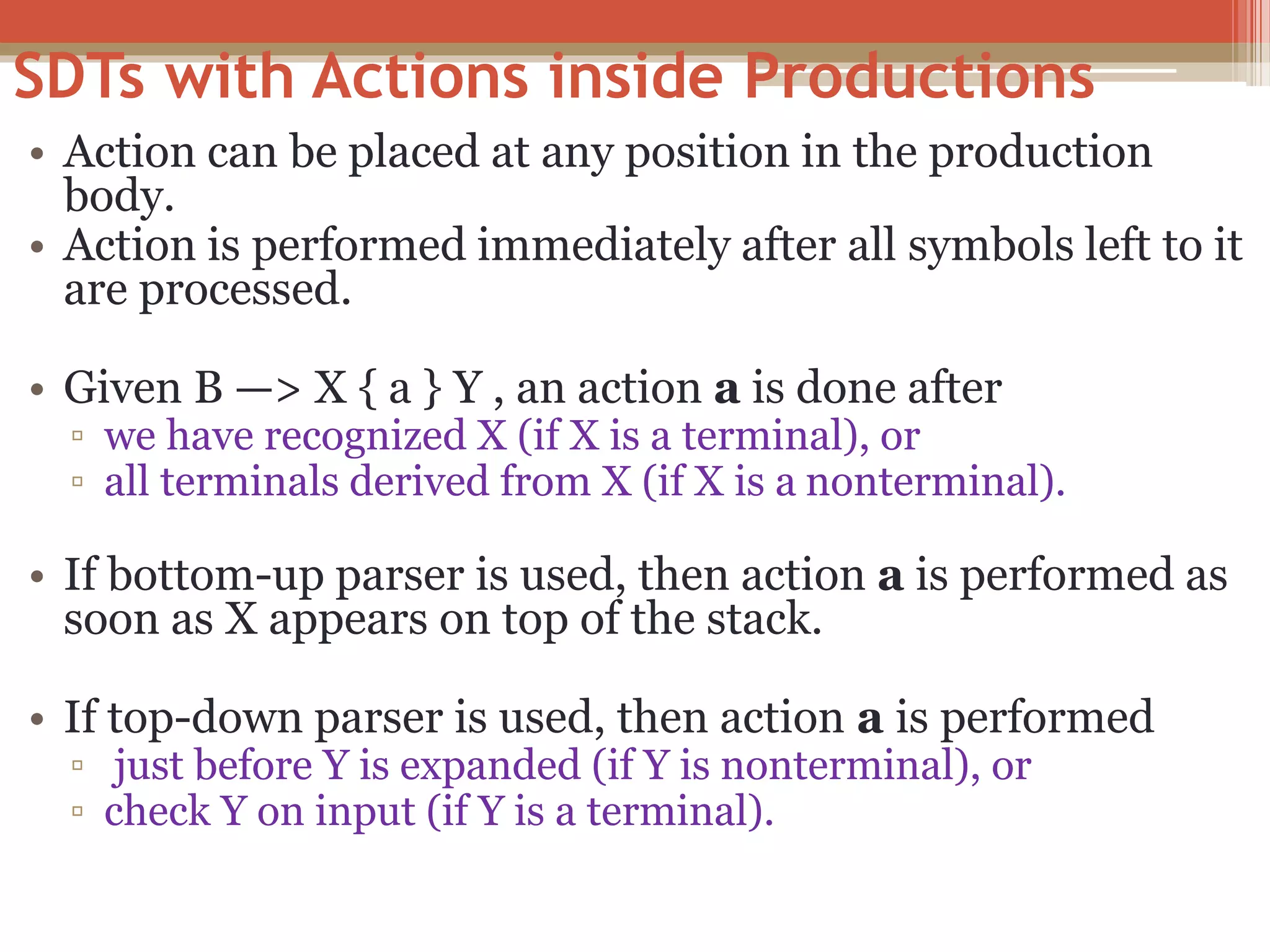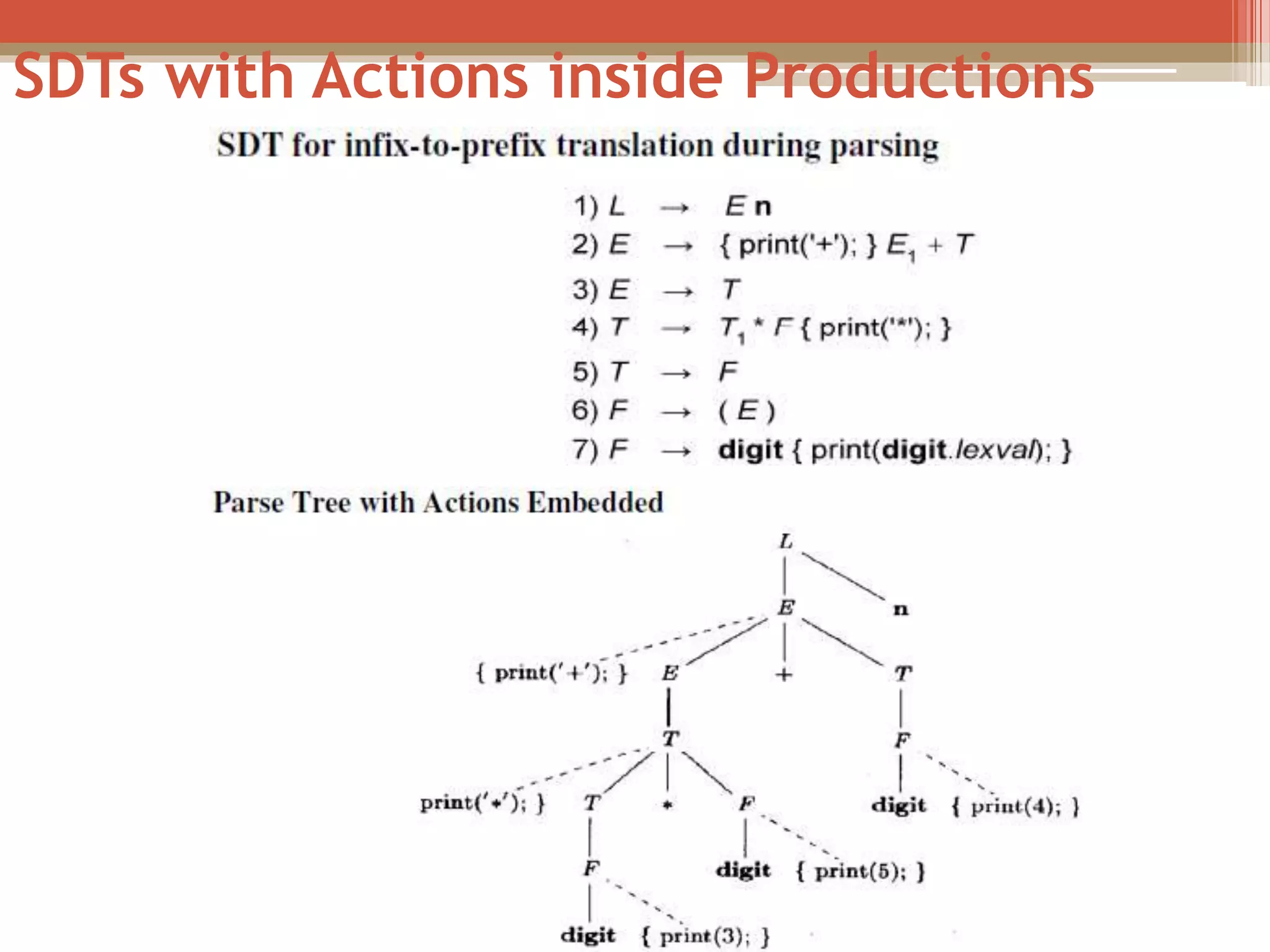This document discusses inherited and synthesized attributes in semantic analysis using syntax-directed translation (SDT). It covers: - Synthesized attributes are defined by semantic rules associated with productions and rely only on child nodes, while inherited attributes rely on parent/sibling nodes. - Terminals can have synthesized attributes from lexing but not inherited attributes. Nonterminals can have both. - Annotated parse trees show attribute values, while dependency graphs determine evaluation order. - S-attributed definitions rely only on synthesized attributes and evaluate bottom-up. L-attributed definitions restrict inherited attributes to avoid cycles. - SDTs can construct syntax trees during parsing to decouple parsing from translation



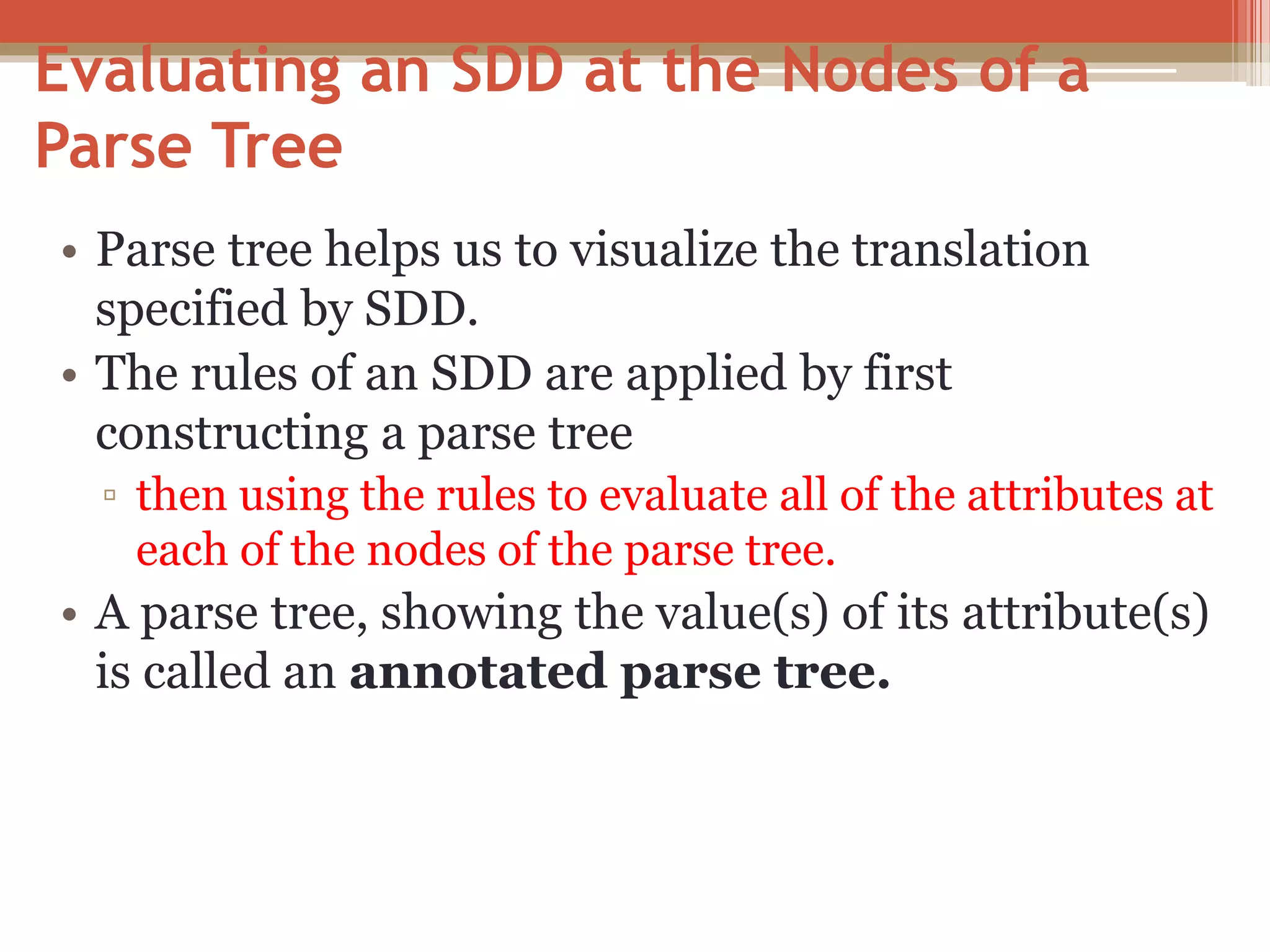

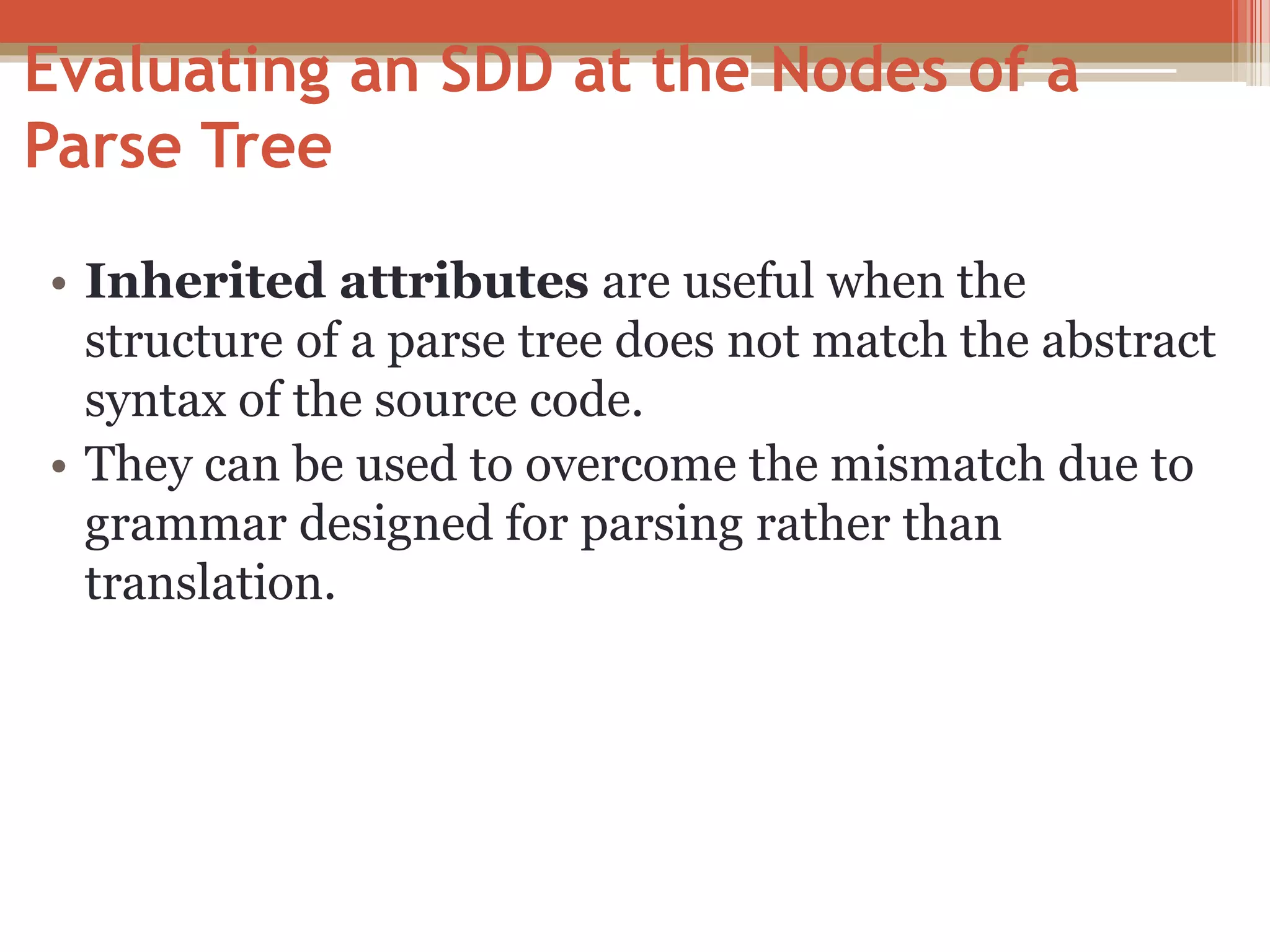
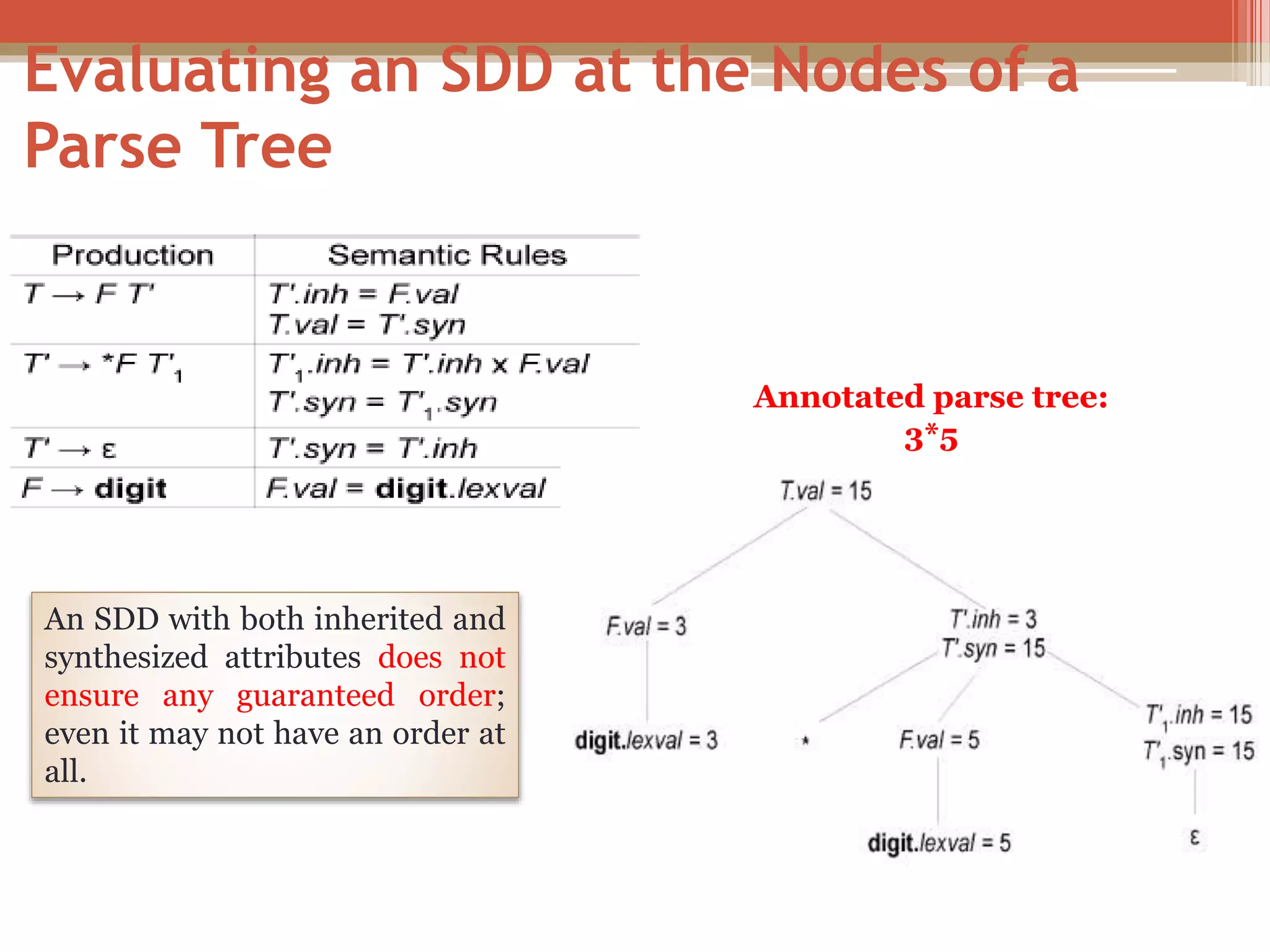
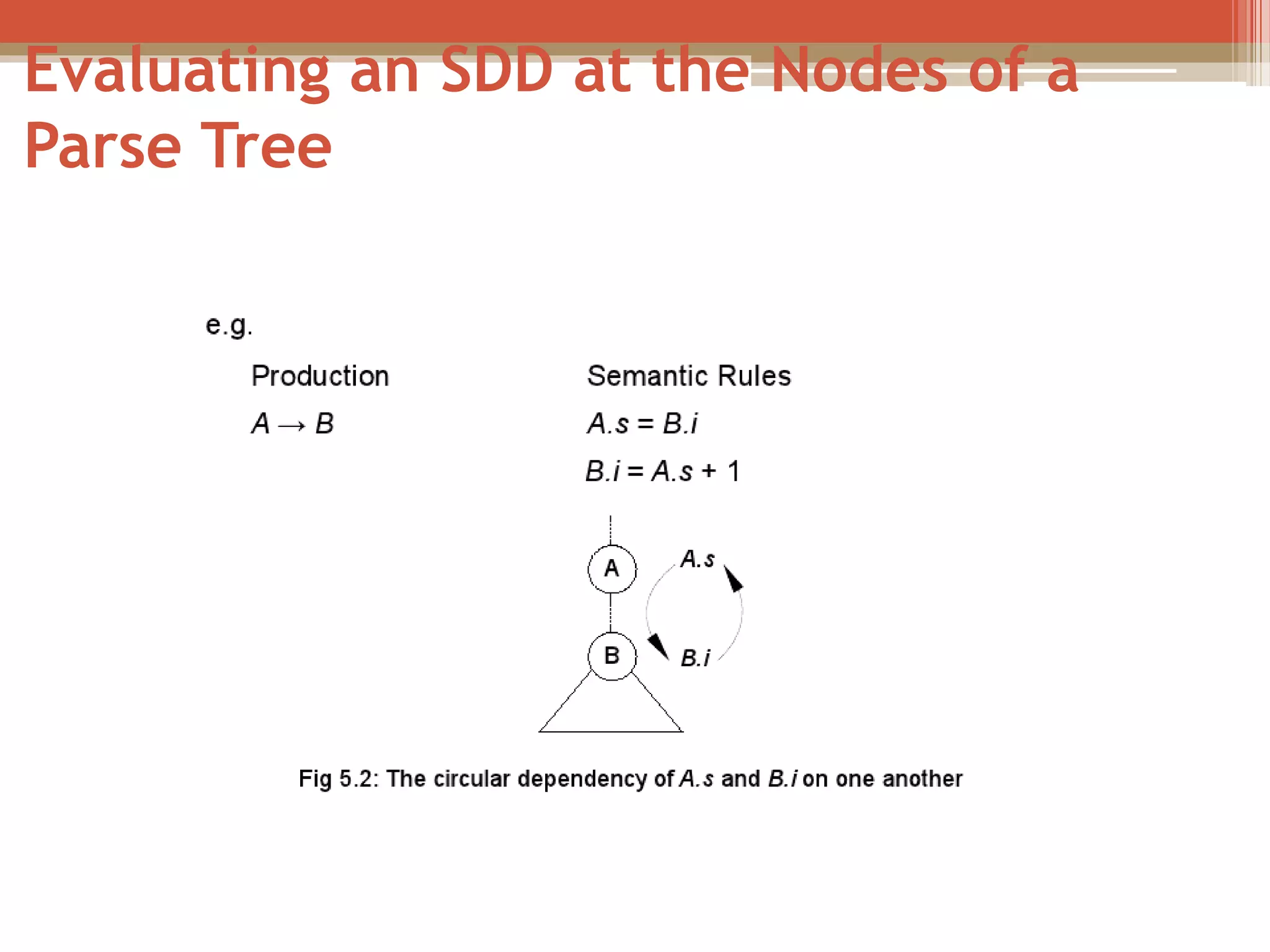
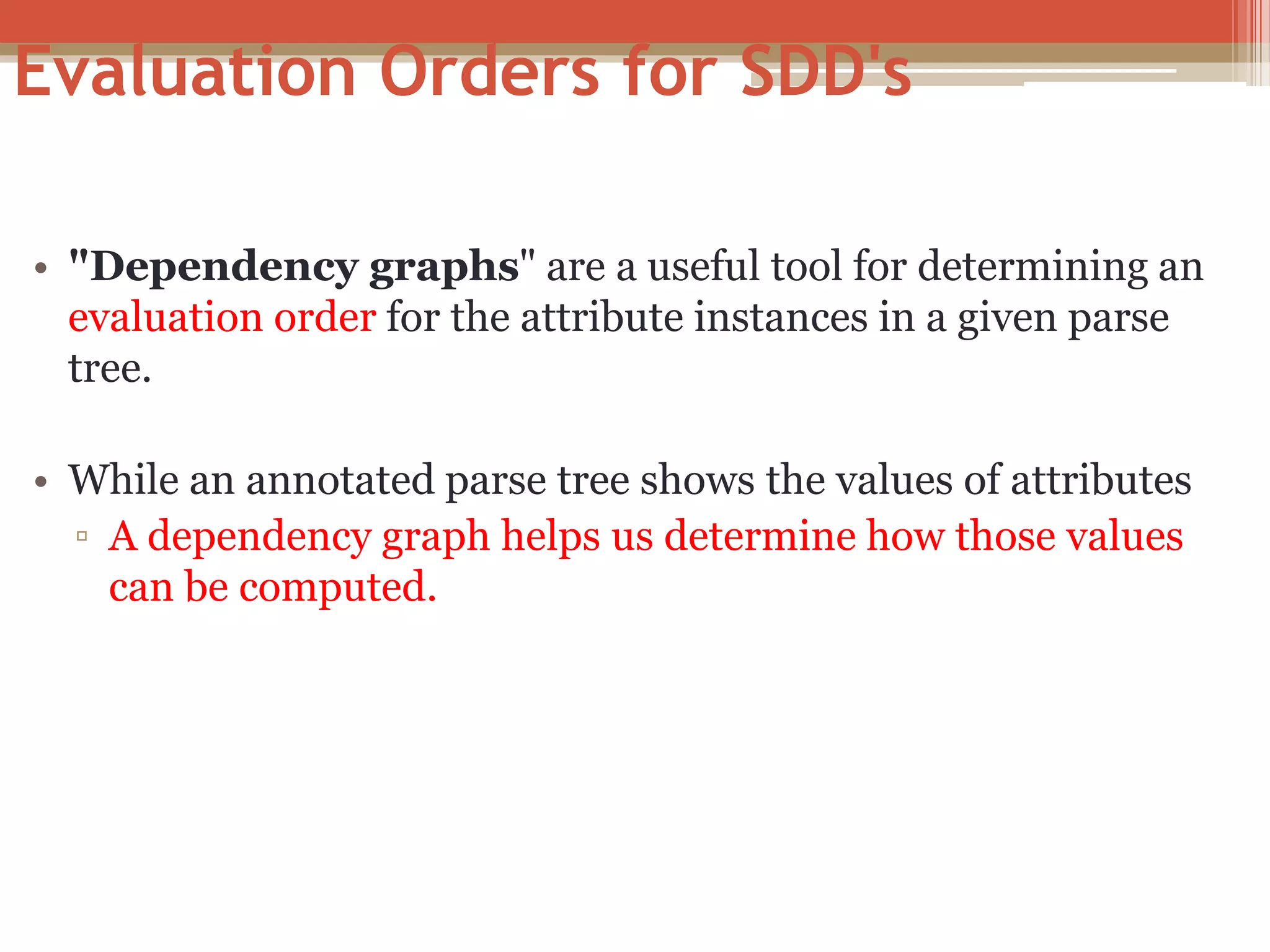
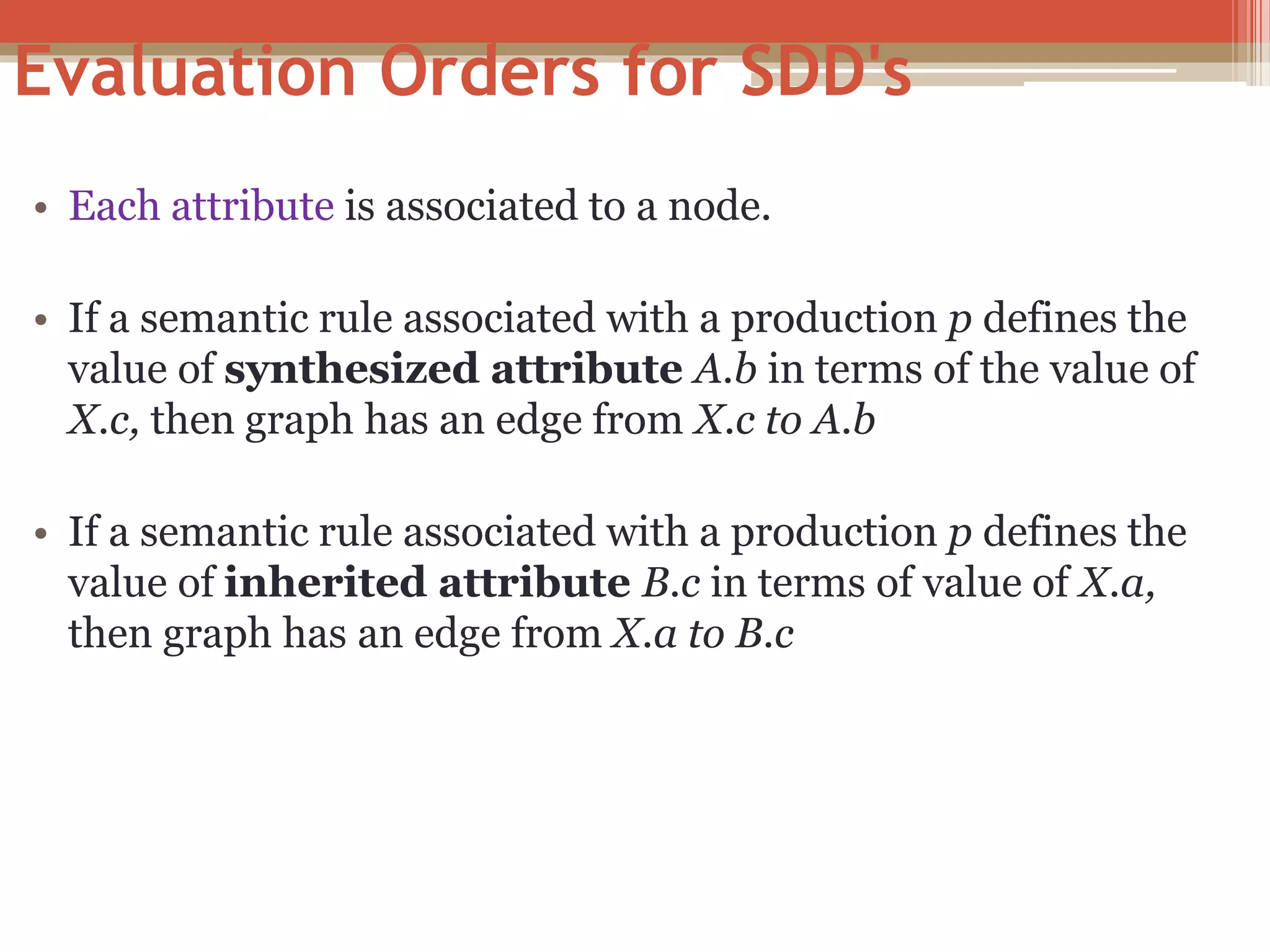

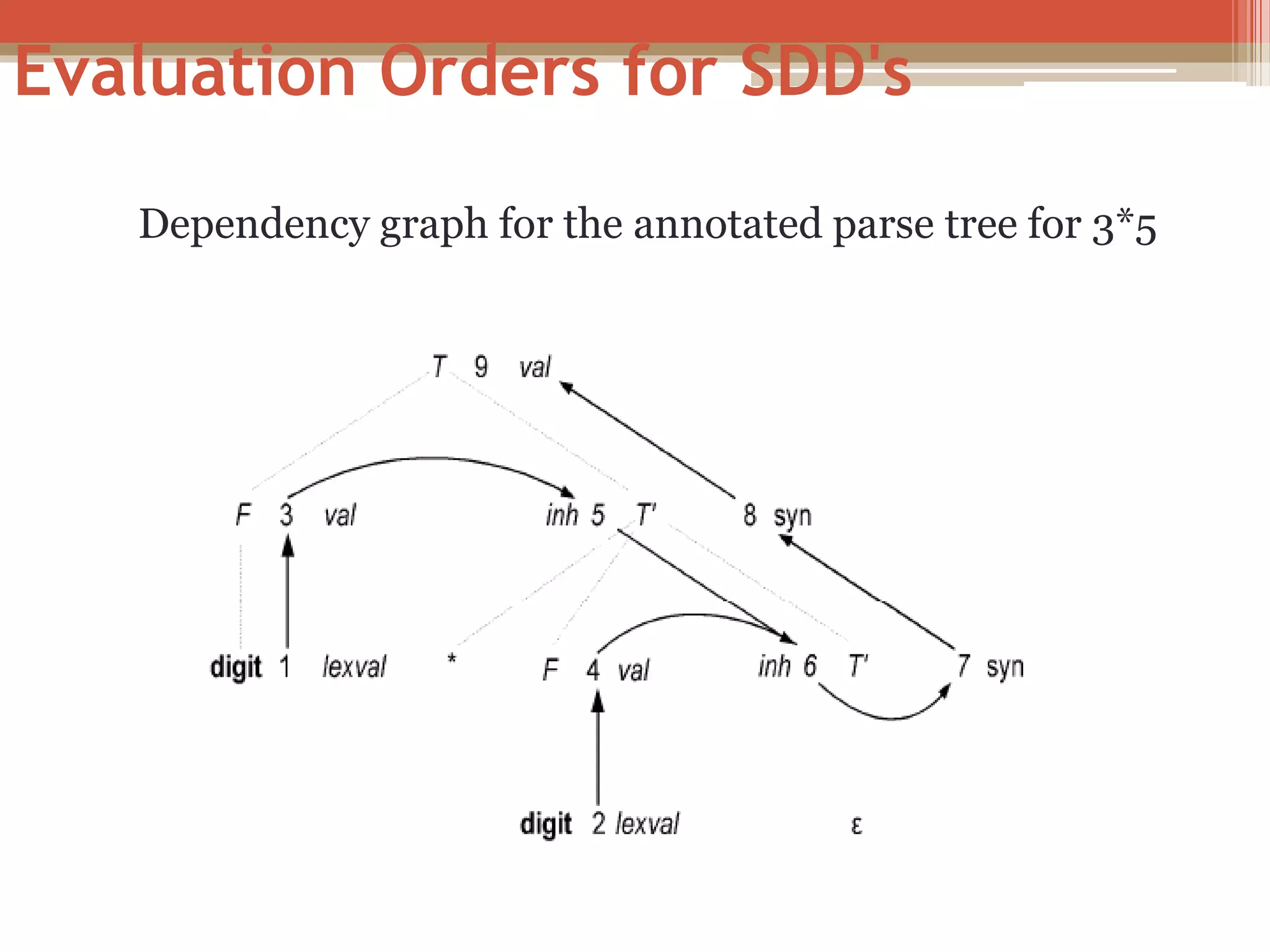

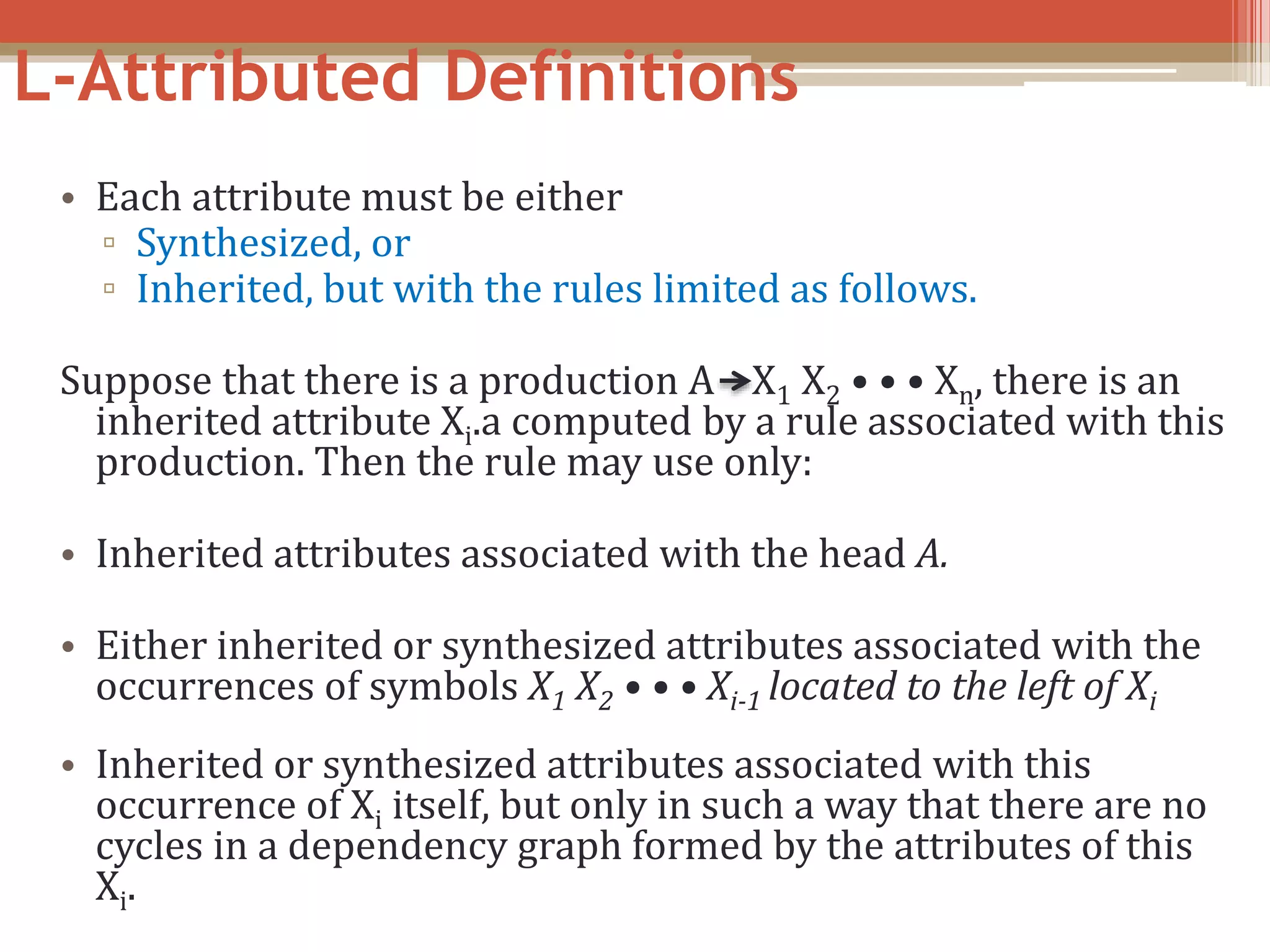
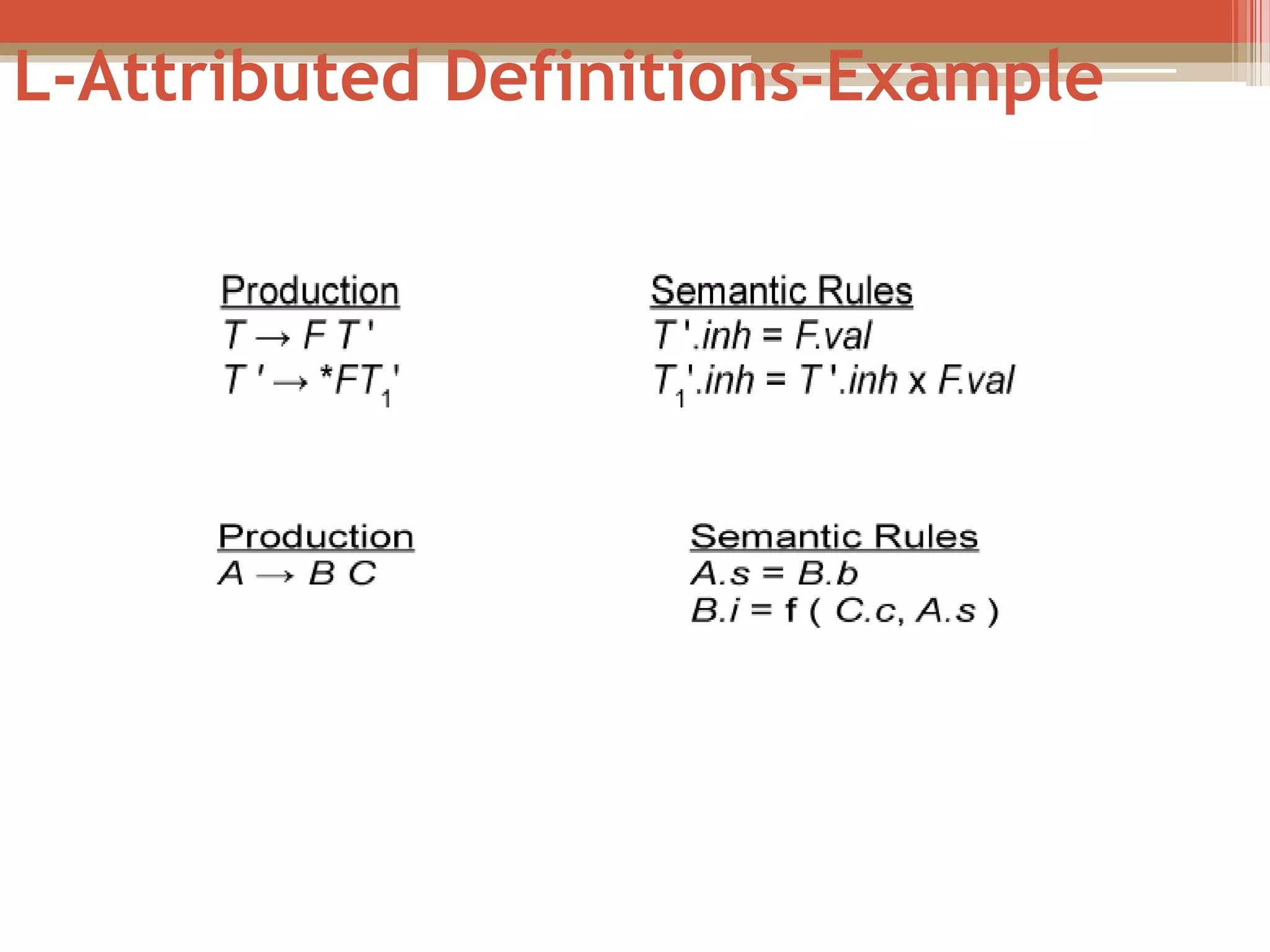
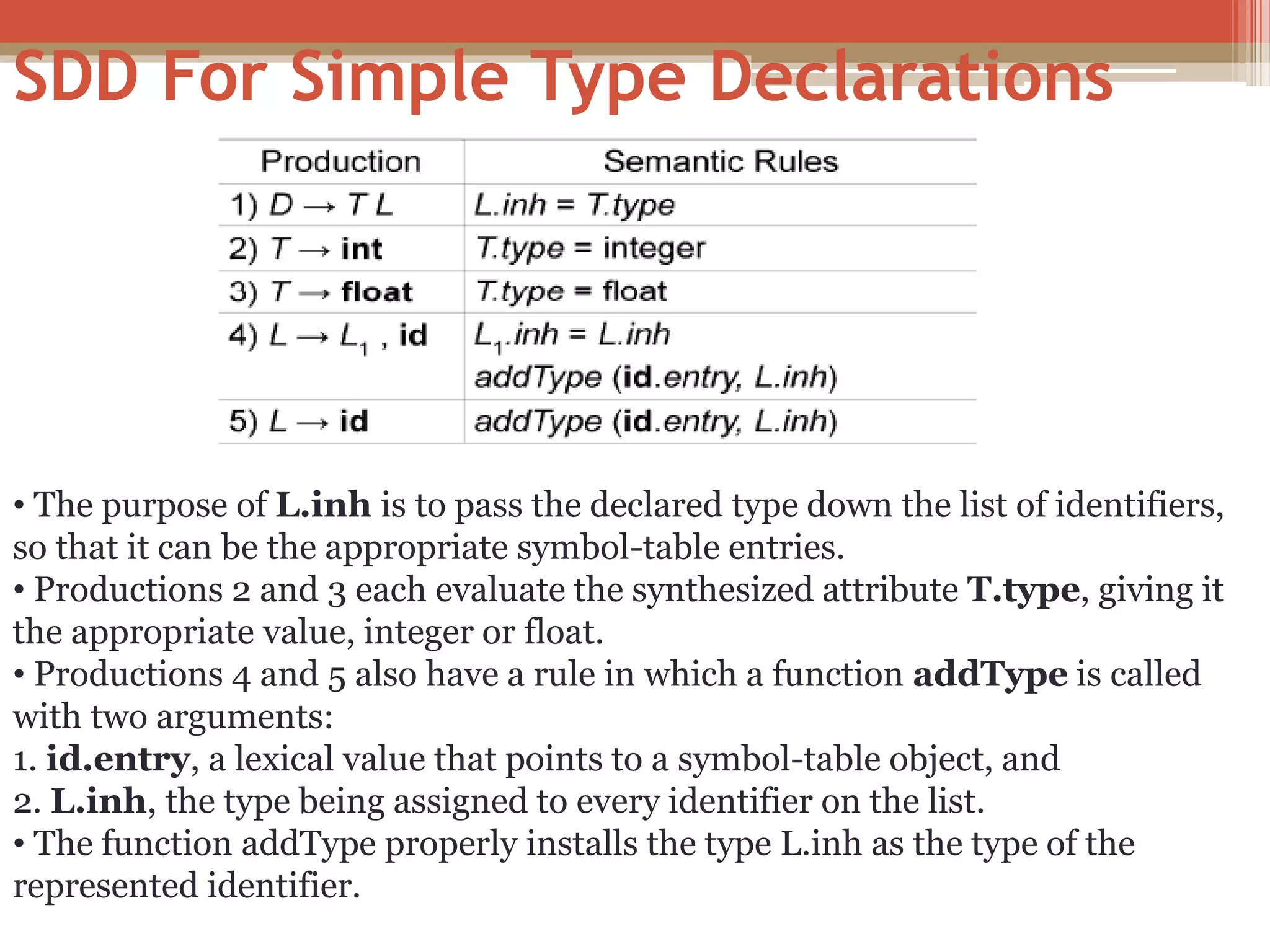
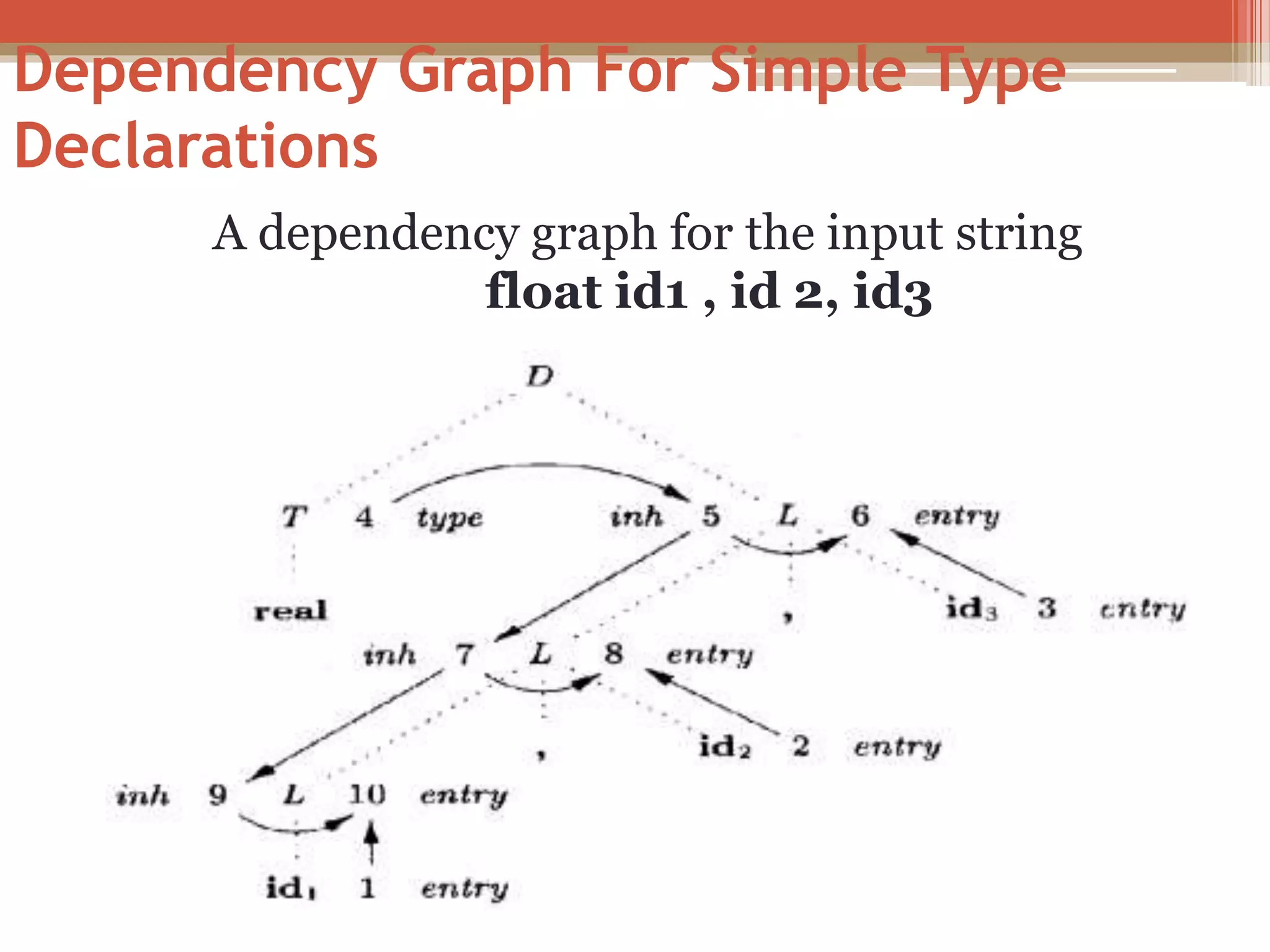

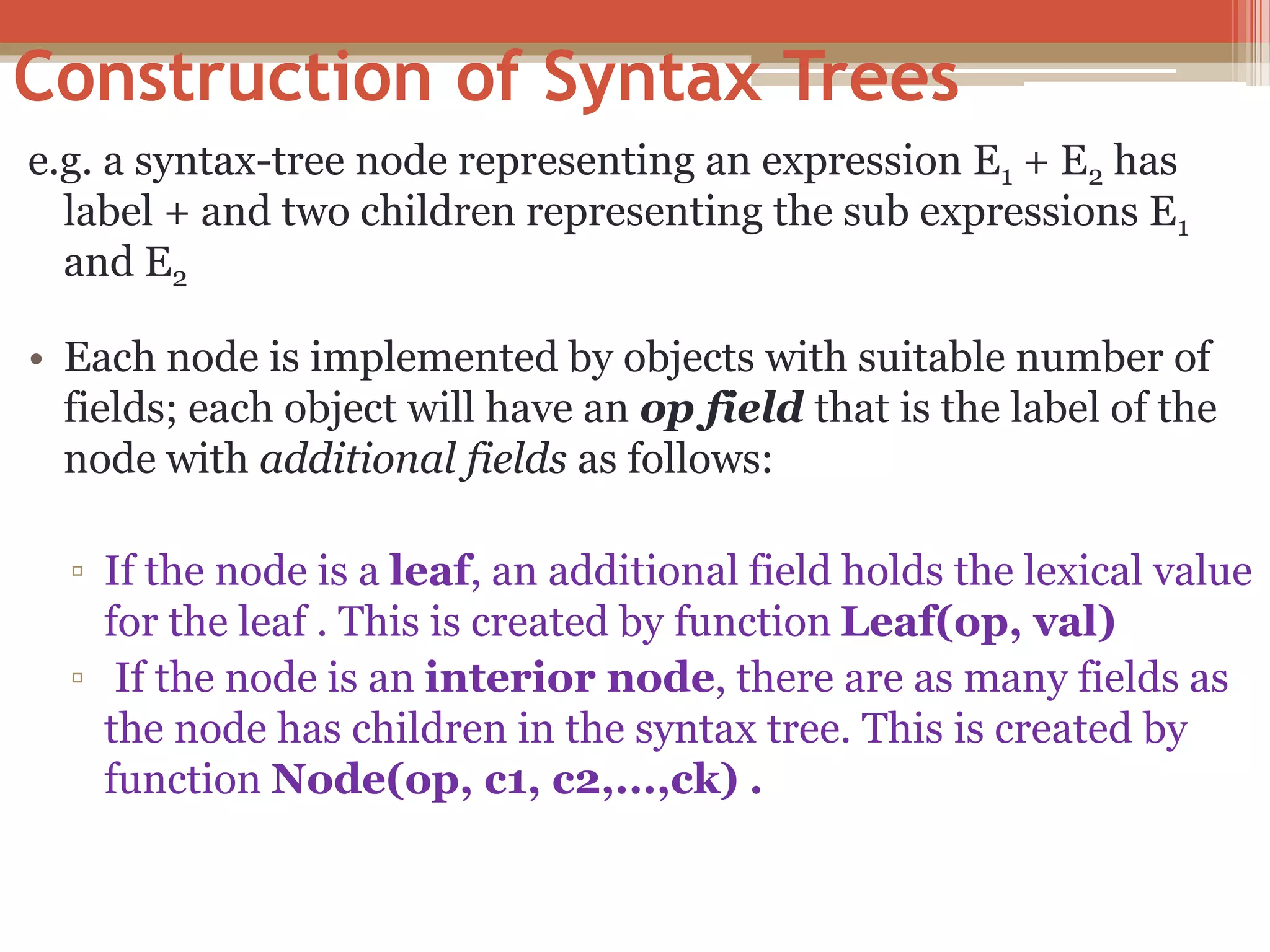
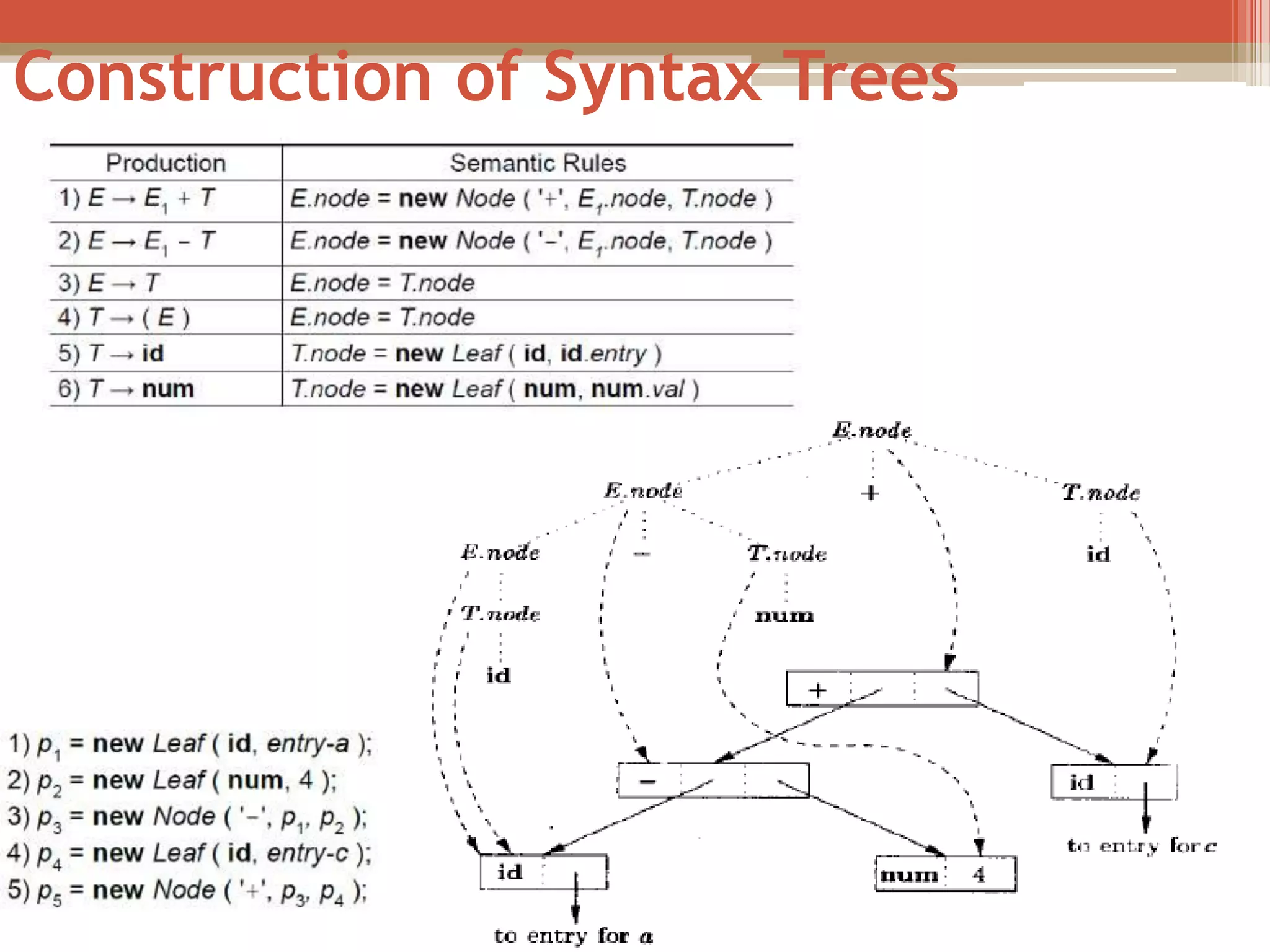

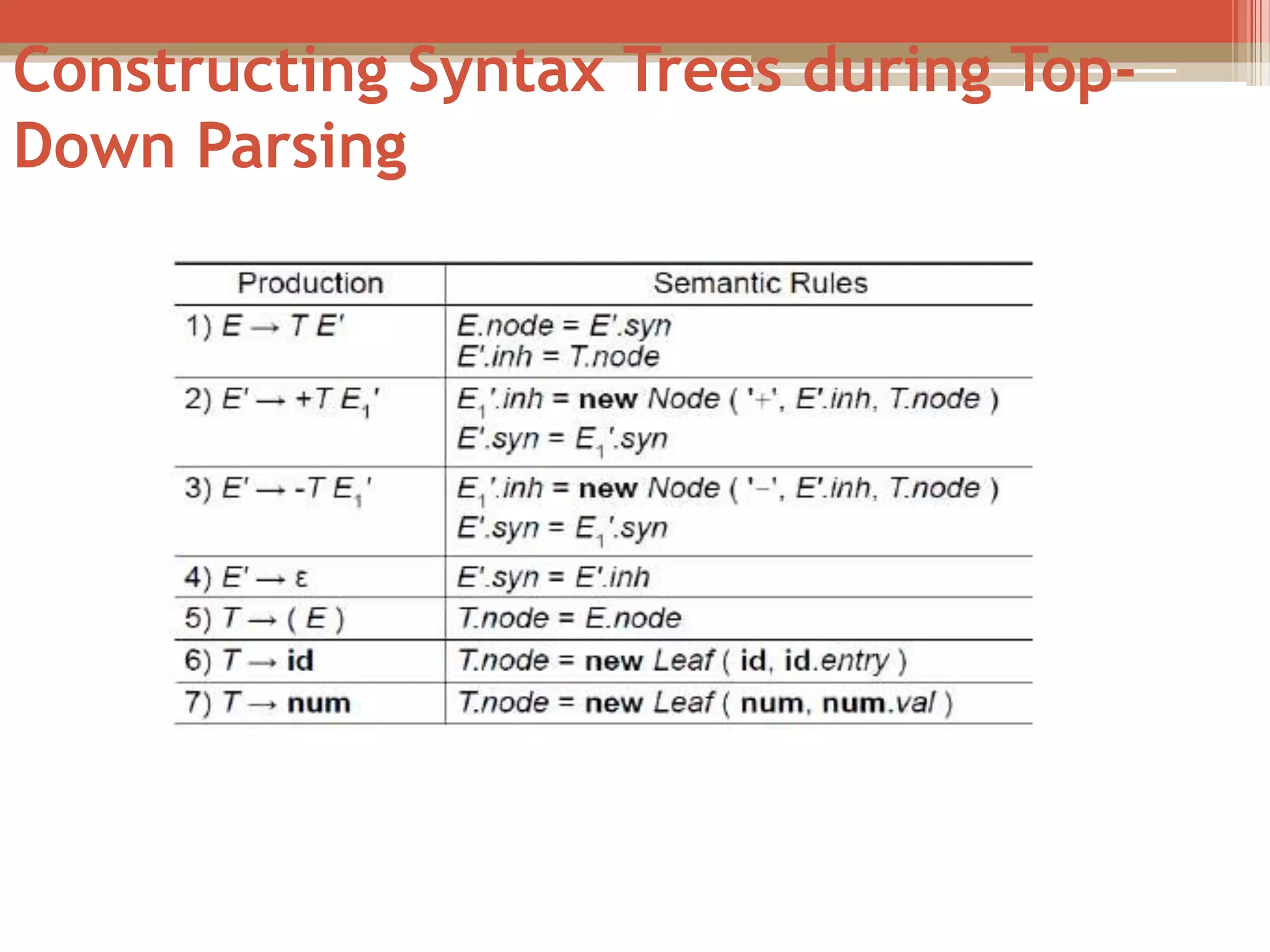
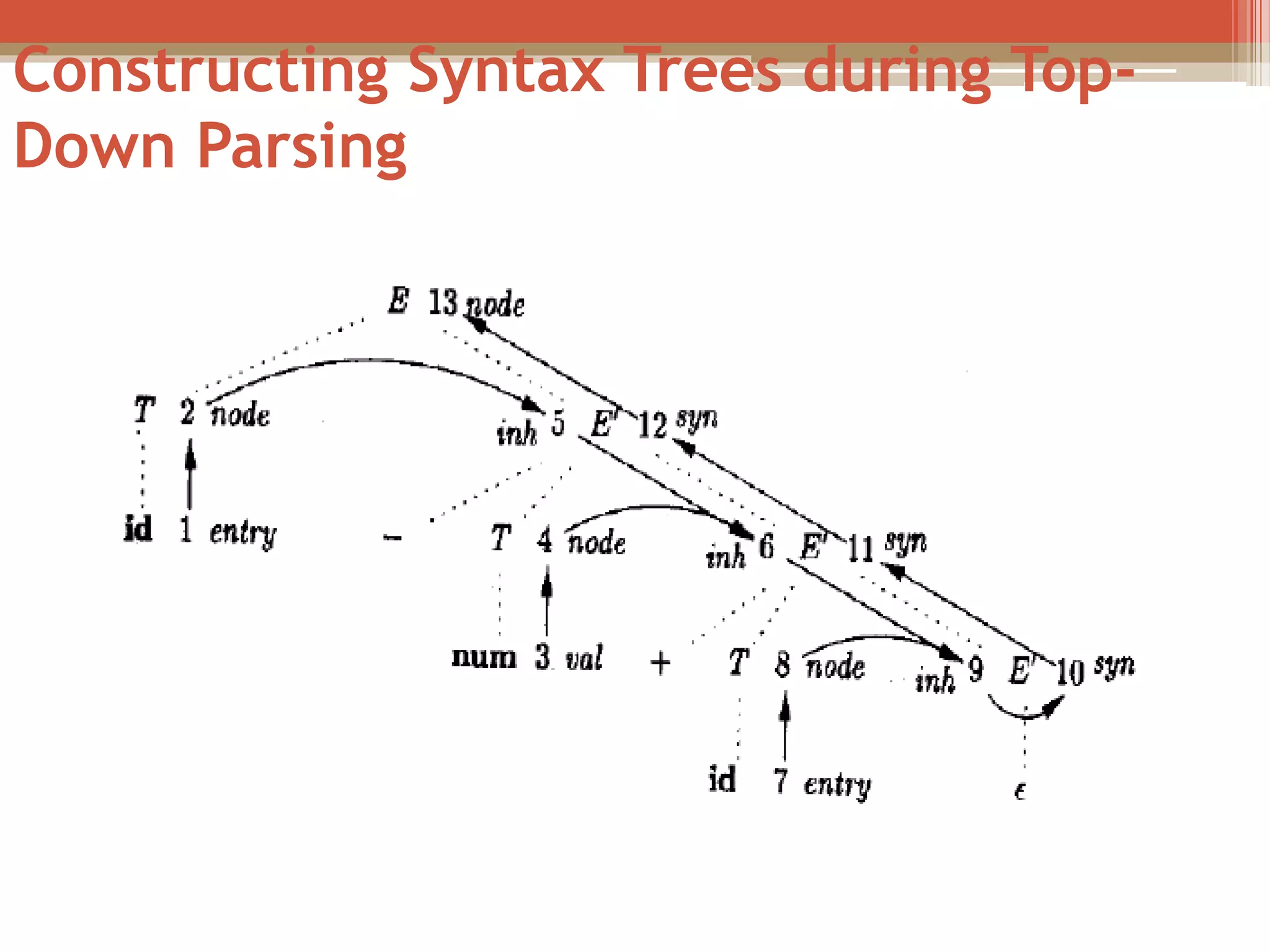
![The structure of a TYPE In C, the type int [2][3] can be read as, "array of 2 arrays of 3 integers." The corresponding type expression array(2, array(3, integer)) is represented by the tree as shown below.](https://image.slidesharecdn.com/lecture11semanticanalysis2-151025154900-lva1-app6892/75/Lecture-11-semantic-analysis-2-24-2048.jpg)
![The structure of a TYPE An annotated parse tree for the input string int [2][3] is shown below.](https://image.slidesharecdn.com/lecture11semanticanalysis2-151025154900-lva1-app6892/75/Lecture-11-semantic-analysis-2-25-2048.jpg)
